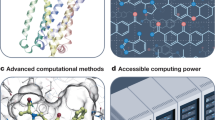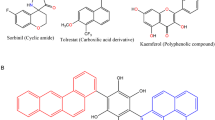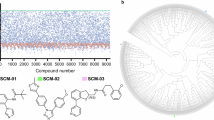Abstract
The inhibitors of cyclophilin A (CyPA) have drawn a great deal of attention due to their promising potential as small-molecule therapeutics for the treatment of cardiovascular diseases. This ultimately prompts to explore structural geometries of these inhibitors to obtain insights on next generation CyPA inhibitors through rational drug designing. Herein, 2D similarity search for the seven CyPA inhibitors was performed using Ligand.Info database. Small subsets of 2800 molecules from one million compounds were predicted to have activity against cardiovascular drug target CyPA. The binding strength of 2800 ligands with CyPA was assessed through molecular docking analysis using Schrödinger software 2011. The CyPA co-crystal structure and ligand dataset were preprocessed using protein preparation wizard and LigPrep, respectively. Lipinski filter and reactive filter evaluations were applied to 10,351 tautomeric states of 2800 ligands to achieve conformations with good pharmacological properties. Further, systematic Glide HTVS, SP and XP docking had resulted 151 ligands with good binding affinities towards CyPA. Ten best ranked compounds having good correlation with seven published CyPA inhibitors were proposed as potential leads. These ten leads had the advantage of good drug like properties compared to experimentally validated inhibitors. Lead1 (SQ29548) showed XP GScore of -12.11 Kcal/mol and two hydrogen bonds with Asp102 of CyPA which is in well agreement with crystallographic data of ‘CyPA - Sanglifehrin A’ complex. SQ29548 is already used as an antagonist for human recombinant thromboxane receptor which supports ten proposed potential inhibitors identified through virtual screening approach as a starting point for new generation drug designing to combat cardiovascular associated diseases.
Similar content being viewed by others
Article PDF
Author information
Authors and Affiliations
Rights and permissions
About this article
Cite this article
Navya, P., Vani Priyadarshini , I. & Umamaheswari, A. Identification of small molecule inhibitor of cyclophilin-A using high throughput virtual screening and molecular docking Studies. Nat Prec (2011). https://doi.org/10.1038/npre.2011.6529.1
Received:
Accepted:
Published:
DOI: https://doi.org/10.1038/npre.2011.6529.1



